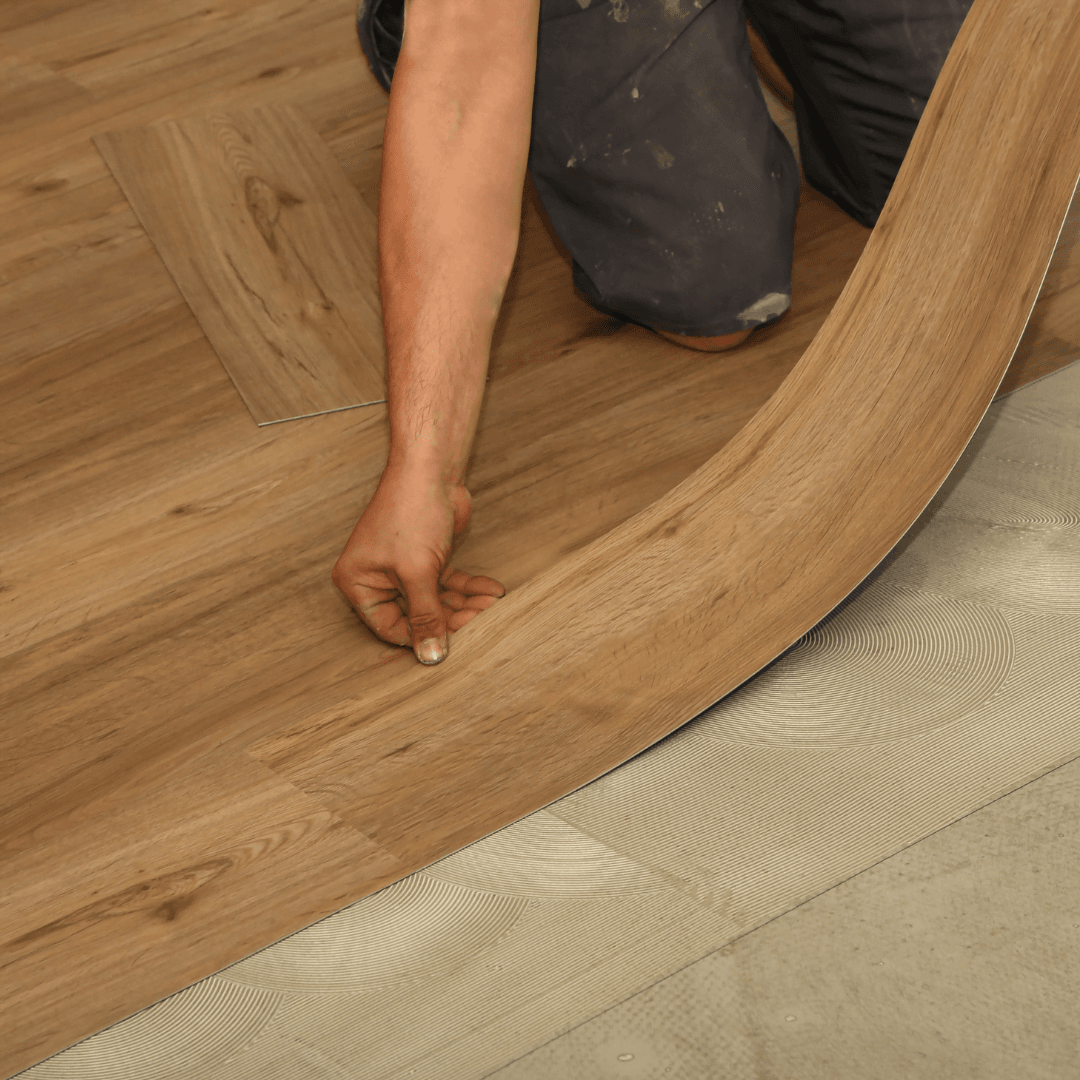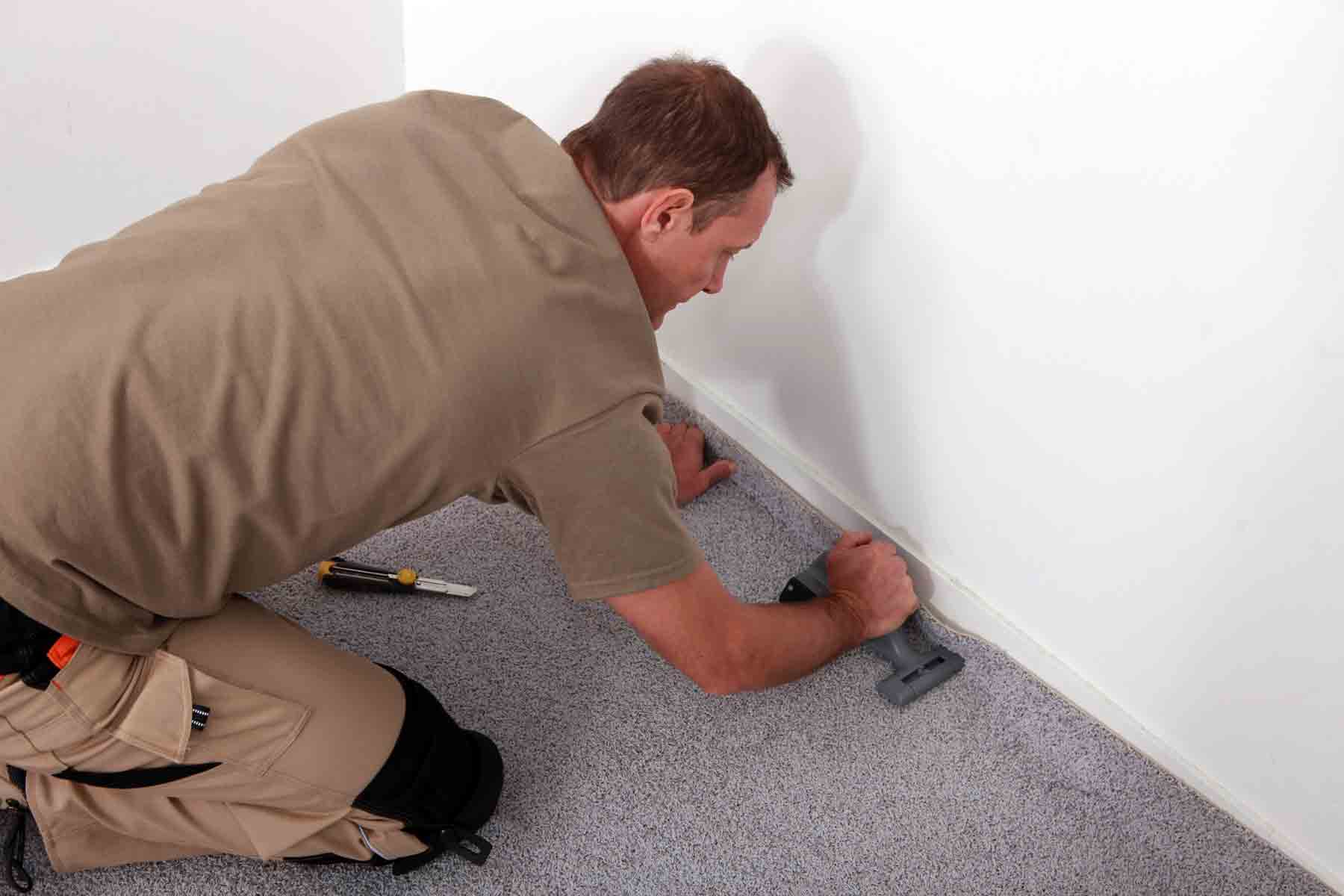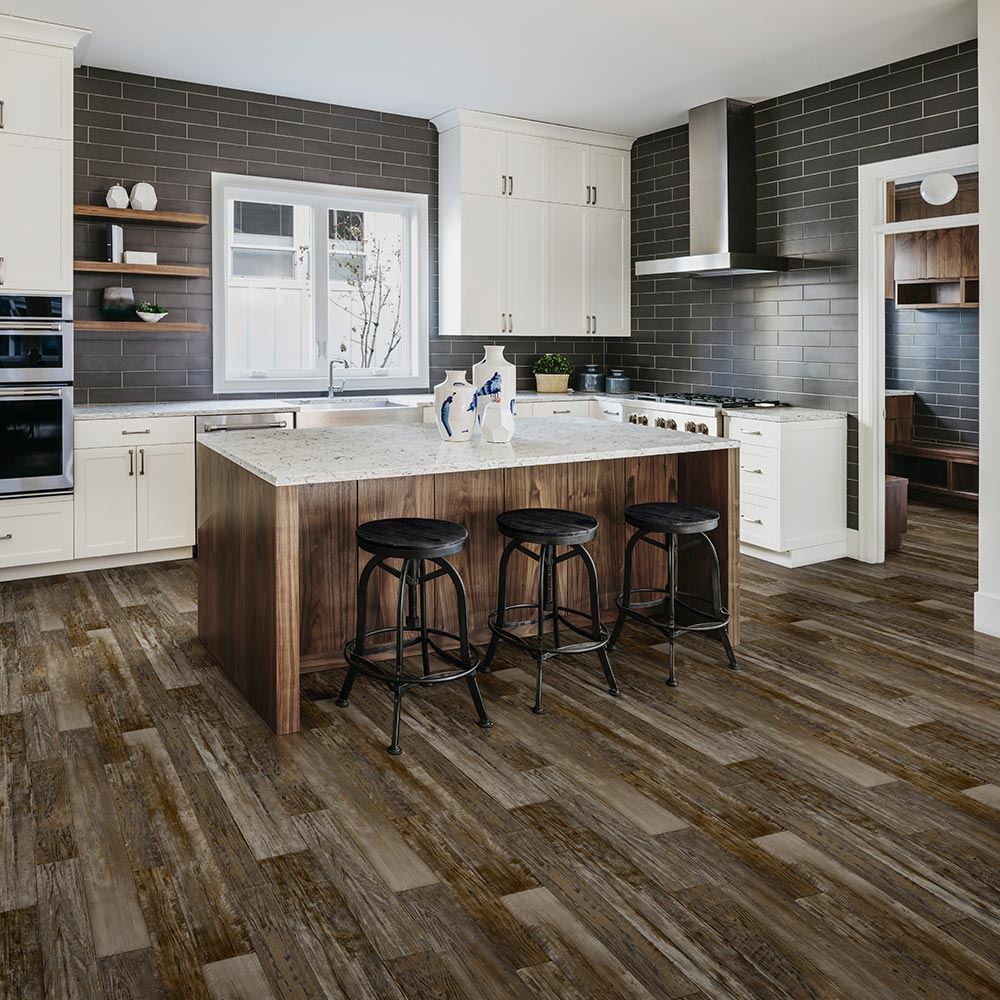
Everything You’ll Need
| Tool | Luxury Vinyl Plank (LVP) | Luxury Vinyl Tile (LVT) | Sheet Vinyl |
|---|---|---|---|
| Utility Knife | ✔ | ✔ | ✔ |
| Tape Measure | ✔ | ✔ | ✔ |
| Straight Edge | ✔ | ✔ | ✔ |
| Pry Bar | ✔ | ✔ | ✔ |
| Spacers | ✔ | ✔ | ❌ |
| Tapping Block | ✔ | ❌ | ❌ |
| Non-Marring Hammer | ✔ | ❌ | ❌ |
| Squeegee | ❌ | ✔ | ❌ |
| Grout Float | ❌ | ✔ | ❌ |
| Notched Trowel | ❌ | ✔ | ✔ |
| Floor Roller | ❌ | ❌ | ✔ |
| Heat Gun | ❌ | ❌ | ✔ |
| Seam Roller | ❌ | ❌ | ✔ |
Step 1: Prepare the Space
Take Off Baseboards and Old Flooring
Start by taking away any baseboards and old flooring in your room for vinyl plank flooring. This gives you a clean floor to work on.
Use a pry bar gently to remove the baseboards without harming the walls.
If you have carpet, cut it with a utility knife into smaller pieces and pull it up. Follow the correct steps for other floor types.
Tidy the Subfloor and Fix Cracks or Uneven Spots
Thoroughly sweep and vacuum the subfloor to clean all dirt. Look for cracks or uneven areas on the surface.
Fill any gaps or low spots with a leveling compound, and sand down high spots to make the floor even.
Add Underlayment for More Cushion and Quietness
Underlayment isn’t always needed, but it can add extra cushion and quietness, making the floor more comfy and silent.
If you decide to add underlayment, roll it out on the subfloor and secure it with tape, making sure there are no gaps or overlaps.
Step 2: Pick a Pattern or Design
Vinyl flooring patterns offer lots of design choices to make your space look nicer.
From old styles to new, these patterns help you make floors that match your home’s style.
Check out some popular vinyl flooring patterns and see how they can enhance your home.
Straight Lay Pattern

The straight lay pattern is simple for vinyl flooring. The planks run parallel to the walls, giving a neat look that fits any room.
Diagonal Pattern

For a more exciting look, try the diagonal pattern. Planks are set at a 45-degree angle, adding depth and making small rooms feel bigger.
Herringbone Pattern

The herringbone pattern is a classic choice. Planks are set in a V-shape, adding texture and style, perfect for entryways and kitchens.
Chevron Pattern

The chevron pattern is stylish and modern. Planks are laid in a continuous zigzag, great for a trendy look in any space.
Parquet Pattern
Step 3: Choose an Installation Method
There are different ways to install vinyl plank flooring. Each method has its own benefits, depending on the type of vinyl and your needs.
GripStrip Method

GripStrip, also called peel-and-stick, is a simple and DIY-friendly way to install vinyl plank flooring.
Each plank has a sticky backing. Just peel off the film and stick it to the floor.
GripStrip works well with Luxury Vinyl Plank (LVP) as it is thicker and more rigid.
It might not be the best for thinner vinyl like Luxury Vinyl Tile (LVT).
Click-Lock Method

Click-Lock, also called interlocking, uses planks that click together tightly.
No glue is needed, and the floor can expand and contract with temperature changes.
Click-Lock works for LVP, LVT, and some Sheet Vinyl types.
Take Note:
- Follow the manufacturer’s instructions for aligning and locking the planks to avoid gaps or uneven seams.
- Use spacers along the walls to keep the expansion gap, helping the floor move freely.
Glue-Down Method

Glue-down installation uses adhesive on the subfloor, pressing the planks in place.
This method gives a strong bond, good for high-traffic areas.
It’s stable and can handle heavy use and moisture.
Take Note:
- Pick a good adhesive for vinyl flooring.
- Work in small parts to keep adhesive sticky.
- Use a roller to press planks into the adhesive.
- Let the adhesive cure before walking on the floor.
Step 4: Lay the First Row
Cut the Short Tongue Edge of the First Plank
To begin, cut off the short tongue edge of the first plank so it fits against the wall. Use a utility knife to cut neatly along the tongue edge.
Place the First Plank 1⁄4 Inch from the Wall
Set the first plank about 1⁄4 inch away from the wall. This gap lets the flooring expand with changes in temperature and humidity. Use spacers to keep this gap along the wall.
Use Spacers Along the Walls for Expansion
Put spacers between the planks and the walls to keep the 1/4-inch gap for expansion. This helps your flooring expand and contract without bending.
Stagger the End Joints by at Least 6 Inches
Stagger the end joints of the planks by at least 6 inches for a nicer look and better stability. This avoids lines matching up and makes a more natural pattern.
Step 5: Cutting Planks to Fit
Use a Utility Knife to Cut and Snap Planks
To fit planks around corners and edges, use a utility knife to make a line where you want to cut. Then, snap the plank for a smooth break.
For Odd Cuts
For odd cuts around door frames or pipes, use a jigsaw or an oscillating tool. These tools make exact cuts for tricky shapes. See how to use a jigsaw here.
Cutting Planks Around Pipes
Measure the pipe size and add an inch. Drill a hole in the plank that size. Cut to fit around the pipe, leaving a half-inch gap. Put the plank in place and seal with silicone caulk.
For Tight Spaces Under Door Jambs
Use a jamb saw to cut planks for tight spots like under door jambs. It makes close cuts to the floor so the planks fit well.
Step 6: Laying Subsequent Rows
Angle the Tongue of the Plank into the Groove of the Previous Row
When putting down the next rows, tilt each plank’s tongue into the groove of the row before it. This helps lock them together for a smooth and strong connection.
Use a Tapping Block and Non-Marring Hammer
For a snug fit, gently use a tapping block and non-marring hammer to tap the planks into place. Do not use a regular hammer on the planks to avoid damage.
Step 7: Finishing the Installation
Install Transition Strips
After putting down all the planks, add transition strips at doorways and between rooms to make a smooth change and protect the floor edges. Follow the manufacturer’s guide to put them in.
Transitioning to Other Flooring
When changing to a different floor type, use a T-molding or reducer strip. Attach it to the subfloor, not the vinyl planks, for a secure finish.
Leave a 1/4-inch gap between the vinyl planks and the transition strip to allow movement and avoid buckling.
Reinstall Baseboards
Put the baseboards back, making sure they are attached to the wall, not the floor, so the flooring can move freely.
Allow the Floor to Acclimate for 48 Hours Before Use
Let the new floor sit for 48 hours before using it. This time helps the floor get used to the room’s temperature and humidity.
Common Things to Avoid When Installing Vinyl Floors
Areas with Too Much Moisture
Vinyl plank floors do not work well in places with a lot of moisture, like bathrooms. Water can get in the seams and make them warp or peel.
Hitting the Planks Directly
Do not hit the planks directly with a rubber mallet or hammer. Use a tapping block to keep them safe when installing.
Keep End Joints from Overlapping
Do not let the end joints in nearby rows overlap. This can make the floor weaker and uneven.
Walking During Floor Adjustment Period
Do not walk on the floor for 48 hours while it adjusts. This time is important for making sure the floor stays good for a long time.
Tips for a Successful Vinyl Flooring Installation
- First, measure the room carefully and figure out how much flooring you need. Add 10% extra for cuts and waste.
- Check each plank before putting it down. Throw away any that are damaged to keep the floor looking great.
- Wear a knee pad for comfort while working. It will protect your knees and make the job easier.
- Go slow and be careful to avoid mistakes. Taking your time helps you do a better job.
Installation Costs for Vinyl Plank Flooring
Putting in vinyl plank flooring has different costs based on how you do it:
- Peel-and-stick: Usually costs $1.50 to $8 per square foot.
- Glue-down: Prices range from $2.50 to $12.50 per square foot.
- Floating/Interlocking: Costs are between $3 and $13 per square foot.
Labor costs go from $1 to $3 per square foot depending on how hard it is to install.
You might also pay for underlayment, which is $0.50 to $1.00 per square foot, and transition strips and trim, costing $1 to $5 per linear foot, to make everything look nice.
Do You Need Professional Help With Your Vinyl Flooring Installation Project?
Now that you know how to install vinyl plank flooring, you’re ready to make a nice, strong floor. If you want experts to handle it, we’re here to help.
Our flooring installation team can do it all — from getting the subfloor ready to placing planks just right — so you can relax and get perfect results. We can help you pick the best vinyl flooring for your place, whether it’s luxury vinyl plank, sheet vinyl, or tile.
Contact us today to schedule your free home visit and check if we work in your area.





